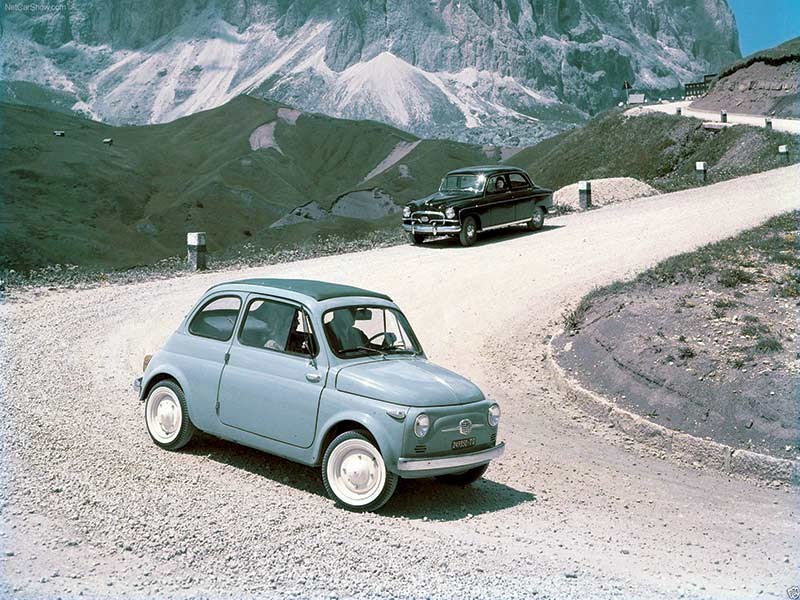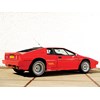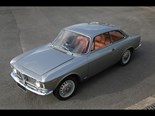2014 Euro-Brit Buyers' Guide
 1957 Fiat 500
1957 Fiat 500

 1981 Lotus Esprit
1981 Lotus Esprit

 1953 Sunbeam Alpine
1953 Sunbeam Alpine


|
|
1957 Fiat 500
|

|
|
1981 Lotus Esprit
|

|
|
1953 Sunbeam Alpine
|
Our annual European and British car buyer's guide shows you what's hot and what's not in the current climate...

|
|
2014 Euro-Brit buyer's guide
|
2014 Euro-Brit buyer's guide
If you’ve spent decades doting on a Daimler or revering a Renault, you probably won’t believe that the market for some British and European models is soaring and sale price records continue to be smashed.
In a classic case of the rich getting richer and the poor getting the picture (apologies to Midnight Oil), high-value and/or high-profile models are appreciating at rates not seen since the ‘boom’ that sent prices berserk during the late 1980s.
There will always be your mega-million cars; exceptionally scarce Ferraris and Bugattis, Bentleys, Jaguars and Ford GT40 with their competition achievements etched into motorsport lore, or exotic, coach-built examples of prominent brands.
Recent years have added to this list a selection of pre-1975 Porsches and Jaguars, the mid-engined Dino 246 Ferrari, and the occasional Mercedes-Benz and Alfa Romeo.
Among the more recent ‘climbers’ is the four-cylinder 190SL Mercedes-Benz Roadster; not fast or especially scarce, but visually similar to the swift and very scarce 300SL two-seater that is soaring towards $2 million.
DB4-5 Aston-Martins, as made famous by a secret agent named Bond, now routinely cost more than $500,000 and hot in pursuit are 1970s Aston V8s. Following some seriously strong prices being realised at overseas auctions, open-top E-Type Jaguars in excellent condition are now comfortably commanding six-digit prices. However, we remain cautious about confirming that the $150,000 E-Type is here to stay.
Down in the arena where most buying and selling occurs, the pickings for those craving an affordable investment are slim.
Predicting which models might be due to move is difficult because values can be influenced by so many factors. The cars that traditionally move higher when other investments falter are well-known vehicles, such as those with celebrities as former owners, or a motorsport pedigree. Choosing a car that once screeched and lurched around the Nurburgring or across Skyline is usually a good strategy.
A good Mini Cooper S will cost less than $30,000, as does an early Jaguar XJS V12, Ford Cortina GT or V6 Capri, BMW 635CSi and perhaps an Alfa Romeo 1600 GT Veloce. Buying an E30 BMW M3 has become expensive and so has the Ford Sierra RS 500. Finding an Escort Twin Cam has for years been difficult, but is well worth the search.
Cliff Chambers
July 2014
HOW TO READ MARKET REVIEWS
Our market reviews focus on market movements for various vehicles during the past year to provide guidance on realistic pricing for available models.
The average values shown are based on surveys of cars offered for private sale and through licensed dealers in metro markets within Australia and on the internet.
The number in brackets following each average price displays the number of cars surveyed. An average based on fewer than 20 sales is not necessarily representative of the market for that specific model.
When I/D (Insufficient Data) or N/S (None Surveyed) is displayed, no cars of that type were sold in the survey period.
CONDITION 1
BODY
Should be free of dents, rust or obvious repairs. Minor stone chips are permissible, major blemishes or mis-matched paintwork are not. Brightwork must be complete and show no evidence of damage.
INTERIOR
Seats should be covered in original-pattern material free of rips or other damage, floor covering complete, clean and of correct material, headlining clean. Dash - especially where timber or veneer is used – should be free of cracks or discolouration.
ENGINE BAY
Clean with no water, oil, fuel or battery leaks. Hoses and belts need to be in sound condition. The correct engine or one which was optional to the model should be fitted. Authentic components are a must if the car is to be upgraded to concours standard.
UNDERBODY
No dents or damage to underseal, exhaust system complete and undamaged, no oil leaks from the differential, transmission or shock absorbers. All suspension components should be in good working order.
WHEELS & TYRES
Original wheels with correct hubcaps or aftermarket wheels in keeping with vehicle style and age should be fitted. Tyres need to be correct size and speed rating, with at least 50 percent original tread.
CONDITION 2
BODY
No serious rust or large areas of body filler evident. Minor bubbling in non-structural areas permissible. Paint should be good quality but may show evidence of repairs, chips and scratches. Brightwork should be generally good, although areas of dulled or scratched chrome are likely.
INTERIOR
Seats may have been re-covered but should be in good general condition. If the trim is original, areas of wear and broken stitching is likely. Floor coverings should be complete, carpets and hoodlining preferably to original pattern. Cleaning may be required.
ENGINE BAY
Engine should be of original type although original engine is unlikely. No major fluid leaks or discolouration. Cleaning will be required.
UNDERBODY
No serious damage, however scrapes and chipping likely. Minor oil leaks are common, exhaust should be complete and free from holes or burning around joints. Suspension components such as kingpins, ball joints and shock absorbers need to be roadworthy.
WHEELS & TYRES
Wheels should be the original rims or legal-sized aftermarket units. Tyres should have at least legal tread depth left.
CONDITION 3
BODY
Moderate rust is inevitable, although chassis, firewall and other structural areas should be sound. Minor body damage is common. Paint likely to be faded, with uneven colour. Body filler usually found in panels but unacceptable in structural areas. Brightwork should be basically complete and major components like the grille must be fitted. Re-chroming or polishing of most parts will be required.
INTERIOR
Seats need to be structurally sound but will normally need re-covering. Floor coverings likely to be damaged or missing. Door trims should be fitted but may need replacement. Vinyl dashboard tops usually cracked or warped.
ENGINE BAY
The engine should run but work will be needed, with the engine bay likely to be dirty and oil stained. Hoses and fuel lines may need replacement for the vehicle to be reliable.
UNDERBODY
Will show signs of neglect and damage (dents, stone damage, etc) but should be free of major rust. Chassis and structural members need to be straight. Suspension components and exhaust systems will usually need replacement.
WHEELS & TYRES
Wheels should be free of major damage, but tyres will normally need replacement.
CONCOURS
Vehicles in genuine concours condition will be completely original or rebuilt to the highest standards. Generally they are better than when new. Some cleaning or replacement of minor components may be required but anything more than minor blemishes will significantly reduce the car’s chances of success.
Cars with the potential to achieve Gold standard (90 percent or better) in open judging can cost 50 percent or more than Condition One examples.
Disclaimer
The author and publisher have made every effort to ensure the accuracy of the 2014 Euro-Brit Car Buyer’s Guide, but we do not accept responsibility for any loss or inconvenience caused by errors or omissions Values are subject to change due to social, political or economic circumstances within Australia or elsewhere. Rising fuel prices are a factor that will accelerate depreciation of larger-engined cars and enhance demand for economical models.
To determine the value of a specific vehicle, inspection by an appropriately qualified specialist is strongly recommended.
Unique Cars magazine Value Guides
Sell your car for free right here
Get your monthly fix of news, reviews and stories on the greatest cars and minds in the automotive world.
Subscribe

.jpg)








.jpg)


